Chai Ingredients & Benefits
Holy Cow Chai enhances overall health by supporting the digestive and nervous systems. The high antioxidant content further increases the beneficial effect of drinking Chai.
Enjoy theses health benefits, savour the unique taste of home brewed chai and delight in the aromatic transformation of your kitchen..
Our Chai Selection
Organinc Black Formosan Tea
 - black tea is high in antioxidants that support the immune system and tannins that aide immunity and the digestive system.
- black tea is high in antioxidants that support the immune system and tannins that aide immunity and the digestive system.
Originating in China and in Assam, black tea is now widely grown around the world.
It is the most commonly used and popular tea in the west. Originally green tea with the leaves further dried, this process changes the flavour aroma and colour.
Due to its flavour retaining properties it has long been an article of trade and bricks of black tea served as a form of currency in parts of Asia into the nineteenth century
Organic Rooibus
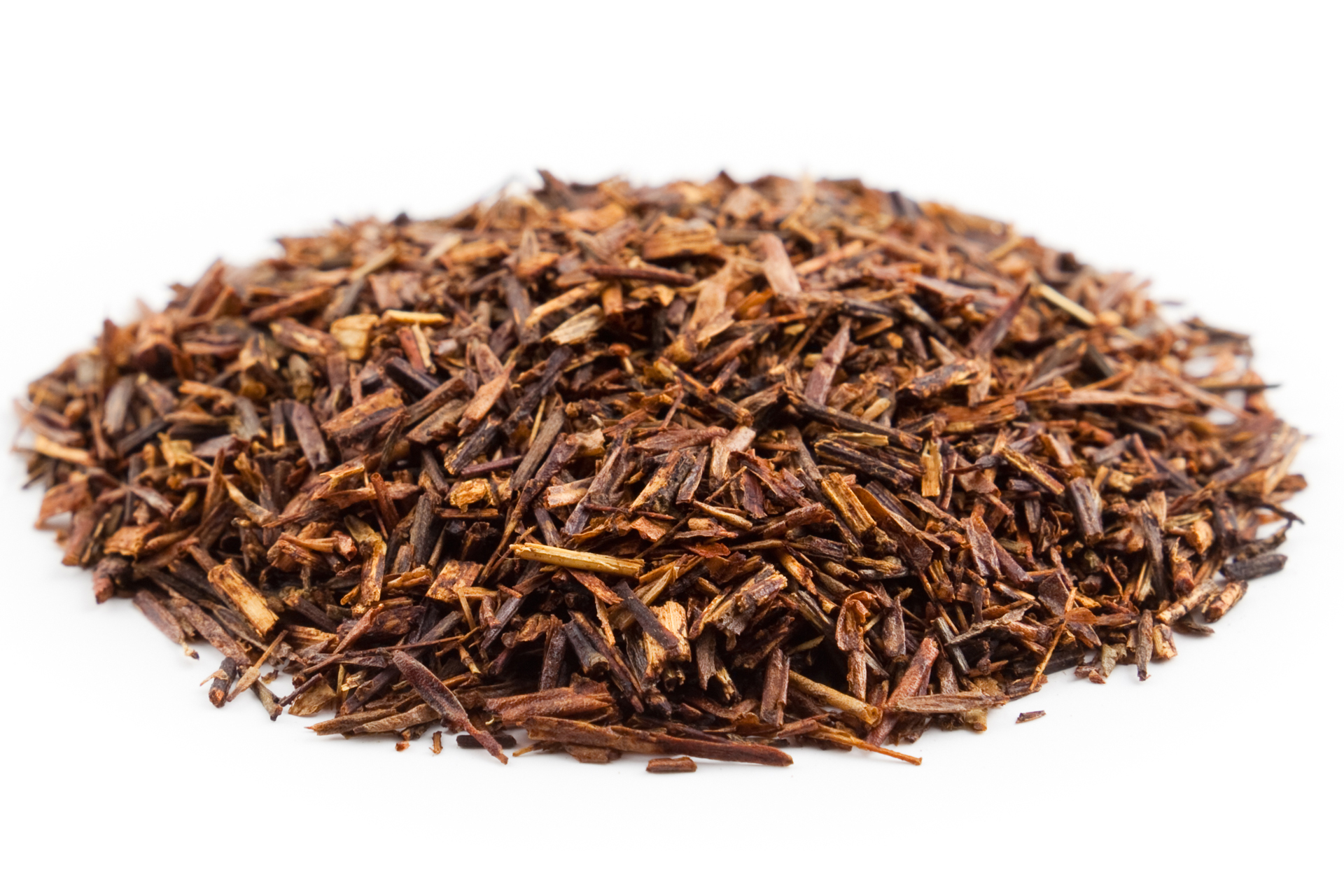 Rooibus originates from the West Cape Province of South Africa and as early as 1772 Swedish naturalist Carl Thunberg noted its use as a tea. It was originally adopted by the Dutch to replace black tea as a drink and via the cultivation research and experiments of Dr Pieter Le Fras Nortier begun in the 1930s it developed into a commercially viable crop which is now become a beloved drink the world wide. It is a herbal tea and not related to either green or black tea
The leaves are fermented to produce the distinctive reddish - brown colour and also enhances its flavour.
Rooibus has no caffeine content and low tannin levels compared to black or green tea It also contains a high level of antioxidants
Rooibus originates from the West Cape Province of South Africa and as early as 1772 Swedish naturalist Carl Thunberg noted its use as a tea. It was originally adopted by the Dutch to replace black tea as a drink and via the cultivation research and experiments of Dr Pieter Le Fras Nortier begun in the 1930s it developed into a commercially viable crop which is now become a beloved drink the world wide. It is a herbal tea and not related to either green or black tea
The leaves are fermented to produce the distinctive reddish - brown colour and also enhances its flavour.
Rooibus has no caffeine content and low tannin levels compared to black or green tea It also contains a high level of antioxidants
Organic Green Formosan Tea
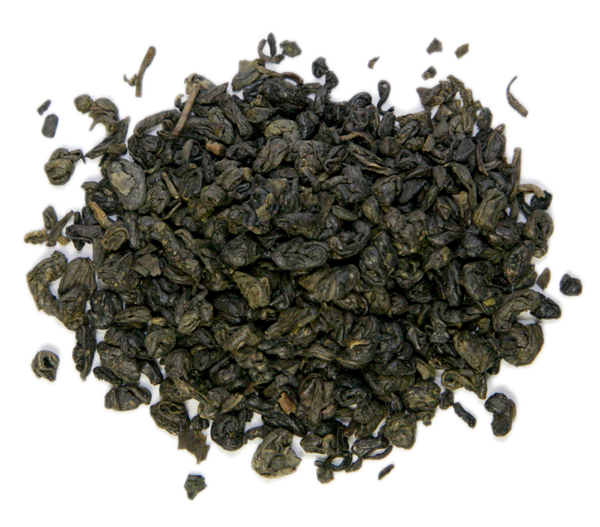 Green Tea originated in the pristine mountains of China where cool air helped produce the fine teas. According to legend it was first brewed in2737BC during the reign of Emperor Shennong. Several texts have been written and considered important in the green tea history Namely Tea Classic – Lu Yu 600 AD and Book of Tea – Eisai 1191 written by a Zen monk
Both describing the process and attributing benefits to drinking green tea. It has a high antioxidant content which is of benefit in aiding the immune system and associated with a lower risk of death from any cause.
Formosan Green tea is free from tannins and the associated bitterness and is also 98% caffeine free.
Green Tea originated in the pristine mountains of China where cool air helped produce the fine teas. According to legend it was first brewed in2737BC during the reign of Emperor Shennong. Several texts have been written and considered important in the green tea history Namely Tea Classic – Lu Yu 600 AD and Book of Tea – Eisai 1191 written by a Zen monk
Both describing the process and attributing benefits to drinking green tea. It has a high antioxidant content which is of benefit in aiding the immune system and associated with a lower risk of death from any cause.
Formosan Green tea is free from tannins and the associated bitterness and is also 98% caffeine free.
Dandelion and Chicory
 Dandelion and Chicory combine to add an earthy but sweet taste to your chai.
Dandelion is common to the Eurasian and North American regions whilst Chicory is native to the Mediterranean
Chicory root has been added to stouts for flavour and in the mid 1970s was introduced as an ingredient of the East German “Mischkaffee” during the East German coffee crisis. It has been added to yogurts as a prebiotic and also in the treatment of internal parasites.
Dandelion was thought to evolve about 30 million years ago in Surasia and has been used by humans as both food and a medicine for much of recorded history. Its botanic name originates in medieval writings on pharmacy and its English name form the corruption of French dent de lion – meaning lions tooth referring to the coarsely toothed leaves Historically dandelion was prized for a variety of medicinal properties and contains a number of pharmacologically active ingredients. It has been used to treat biliary and liver conditions, aside digestion and act as a diuretic.
Dandelion and Chicory combine to add an earthy but sweet taste to your chai.
Dandelion is common to the Eurasian and North American regions whilst Chicory is native to the Mediterranean
Chicory root has been added to stouts for flavour and in the mid 1970s was introduced as an ingredient of the East German “Mischkaffee” during the East German coffee crisis. It has been added to yogurts as a prebiotic and also in the treatment of internal parasites.
Dandelion was thought to evolve about 30 million years ago in Surasia and has been used by humans as both food and a medicine for much of recorded history. Its botanic name originates in medieval writings on pharmacy and its English name form the corruption of French dent de lion – meaning lions tooth referring to the coarsely toothed leaves Historically dandelion was prized for a variety of medicinal properties and contains a number of pharmacologically active ingredients. It has been used to treat biliary and liver conditions, aside digestion and act as a diuretic.
Spices
Cinnamon
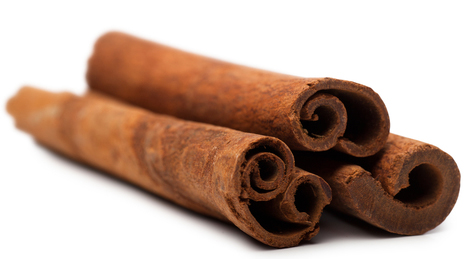 - carminative ,astringent, stimulant
- carminative ,astringent, stimulant
A valued aromatic spice since ancient times and as a medicine to treat colds, warm the digestion and to ease flatulence
Cinnamon has been known from remote antiquity. It was imported to Egypt as early as 2000 BC.
It was so highly prized among ancient nations that it was regarded as a gift fit for monarchs and even for a god: a fine inscription records the gift of cinnamon and cassia to the temple of Apollo at Miletus.
Its source was kept mysterious in the Mediterranean world for centuries by the middlemen who handled the spice trade, to protect their monopoly as suppliers. It was too expensive to be commonly used on funeral pyres in Rome, but the Emperor Nero is said to have burned a year's worth of the city's supply at the funeral for his wife Poppaea Sabina in AD 65. Cinnamon trees are native to South East Asia.
Ginger
 - a popular spice whose uses include as a stimulant, carminative and diaphoretic (promotes perspiration)
- a popular spice whose uses include as a stimulant, carminative and diaphoretic (promotes perspiration)
Ginger is warming and stimulating promoting gastric secretion and aiding the absorption of food. It eases indigestion colic and flatulence. It also has a stimulating effect on the heart and circulation so it is good for cold hands and feet.
From its origin to the present, ginger is the world’s most widely cultivated herb. Testimonials of both the medicinal and economic importance of ginger have been recorded as far back as five thousand-year-old Greek literature to 200 B.C. Chinese records chronicle the immense wealth associated with growing acres of ginger. In the Middle Ages, as little as just one pound was worth 1 shilling and 7 pence, approximately equivalent to the price of a sheep. Originates from South East Asia but is widely cultivated around the world.
Nutmeg
 - is an aide to digestion, stimulates circulation and a general tonic
- is an aide to digestion, stimulates circulation and a general tonic
Nutmeg originates in Banda, the largest of the Molucca Spice Islands of Indonesia. The mace portion of the nutmeg is the outer red aril of the nutmeg seed. It is known to have been a prized costly spice in European medieval cuisine as a flavouring, medicinal, and preservative agent. In Elizabethan times, it was believed nutmeg could ward off the plague, so nutmeg became very popular and its price skyrocketed.
The Dutch waged a bloody war, including the massacre and enslavement of the inhabitants of the island of Banda, just to control nutmeg production in the East Indies. In 1760, the price of nutmeg in London was 85 to 90 shillings per pound, a price kept artificially high by the Dutch voluntarily burning full warehouses of nutmegs in Amsterdam.
Cardamom
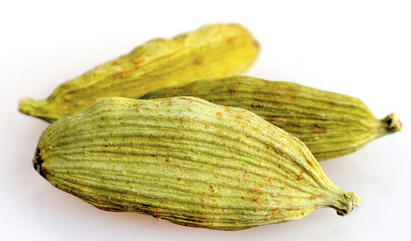 - highly aromatic and helpful in digestion and associated griping pain It stimulates digestion and eases bowel spasms
- highly aromatic and helpful in digestion and associated griping pain It stimulates digestion and eases bowel spasms
Many historical Indian texts mention cardamom as a flavouring and medicine. Cardamom is also mentioned in Sanskrit texts of the 4th century BC where it is used in offerings during ceremonies.Cardamom plants grow wild in parts of the monsoon forests of the Western Ghats in southern India and this area has become known as the Cardamom Hills. It is also native to Bhutan and currently grown in Guatamela. Until just 200 years ago wild plants from these hills provided most of the world's supply of cardamom. The fruits have been traded in India for at least 1000 years. It was known as the Queen of Spices, with black pepper being the King.
Cloves
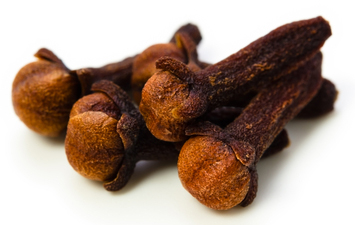 - most stimulating and carminative of all the ingredients.
- most stimulating and carminative of all the ingredients.
Traditionaly used to treat nausea, flatulence, indigestion and dyspepsia via stimulating digestion. Analgesic action traditionally used for toothache.
In the 3rd century BC, a Chinese leader in the Han Dynasty required those who addressed them to chew cloves so as to freshen their breath. Cloves were traded by Muslim sailors and merchants during the Middle Ages in the profitable Indian Ocean trade, The Clove trade is also mentioned by Ibn Battuta and even famous One Thousand and One Nights characters such Sinbad the Sailor is known to have bought and sold Cloves. And archeologists found cloves within a ceramic vessel in Syria along with evidence dating the find to within a few years of 1721 BC. Cloves are native to the Maluku Islands in Indonesia.
Star Anise
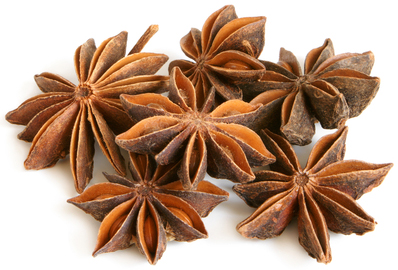 - Aromatic and carminative Star Anise is used in preparations to eases indigestion flatulence and colic
- Aromatic and carminative Star Anise is used in preparations to eases indigestion flatulence and colic
Star Anise originates in South West China and is a widely popular spice in this area. Builders of steam locomotives in Britain incorporated capsules of aniseed oil into white metal plain bearings, so the distinctive smell would give warning in case of overheating. Anise can also n be made into a liquid scent and is used for both drag hunting and fishing. It is put on fishing lures to attract fish.
Black Peppercorns
 - stimulant, carminative, febrifuge properties, aides constipation, flatulence nausea.
- stimulant, carminative, febrifuge properties, aides constipation, flatulence nausea.
It stimulates the taste buds and helps to promote gastric secretions.
Pepper has been one of the most highly prized spices since early trading. It was used as a currency during the seize of Rome in AD 408. The high cost of pepper and other spices motivated the Portuguese to find a sea route to India. Peppercorns originated on the Malabar Coast of India but is widely grown today as a quarter of the worlds spice trade is comprised of peppercorns.











